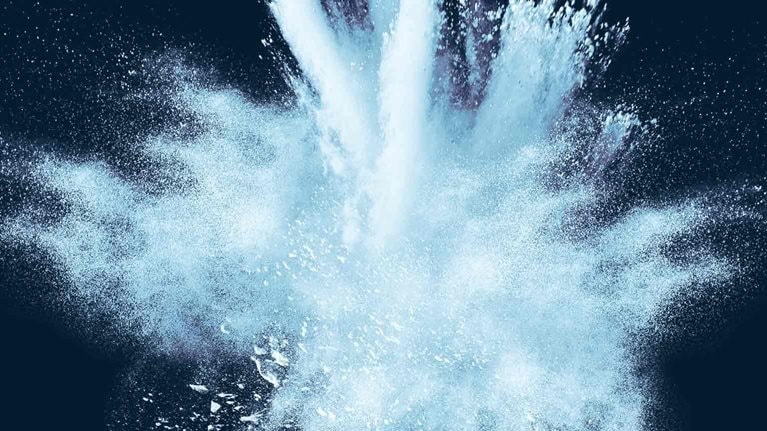As global temperatures continue to rise, manufacturing industries face a sustainability challenge. The semiconductors that sit at the heart of most electrical devices require copious amounts of energy to manufacture and operate. At the same time, in a low-margin industry, costs are rising fast. Recent advances in analytics provide a way for companies to get a grip on these related variables and gauge their impacts on the manufacturing process. Resource cleansheet analysis combines classical cost cleansheet analysis and environmental life-cycle assessment to help companies make vital facilities decisions and add value to the bottom line.
From materials sourcing to manufacturing, transport, usage, and end-of-life processes, most hardware is highly energy dependent. In the manufacturing of computer chips, for example, energy consumption accounts for about 63 percent of emissions.1 And the global information and communications technology (ICT) industry is consuming more electricity every year. By 2030, it is projected to account for 20 percent of total energy demand, mainly associated with networking and data centers.2
To offset high-emissions intensity, leading companies are investigating ways to reduce their carbon footprints. And many are starting at the beginning of the design process. This reflects the fact that more emissions along a product’s life cycle have been shifting from operations toward production in recent years. One reason is that many modern products, from phones to jet engines, are powered by electricity and are therefore much more operationally efficient than their predecessors. Additionally, many of the latest products include features, such as high computation power and displays, that are carbon intensive to produce. Finally, there is an irresistible logic to baking in sustainability from the get-go. Our analysis suggests that R&D accounts for 5 percent or less of the cost of a product, but it influences up to 80 percent of its resource footprint.
McKinsey’s Resource Cleansheet Solution (RCS) maps a product’s or service’s cost and CO2 footprint along its entire value stream and life cycle. The solution is based on the established concept of cost engineering—the methodology that companies use to bring transparency to the production costs, specifications, and features of any project or product, as well as the total cost of ownership over time. Cost engineering is about designing and implementing specifications at the lowest total cost of ownership, balancing design with the costs of procurement, manufacturing, assembly, and in-service support. The benefit of RCS is that the same, rigorous modeling used in cost engineering is retooled to calculate CO2 emissions. It leverages bottom-up analysis to gauge emissions factors for both upstream and downstream activities in product manufacture and use. This enables companies to obtain an end-to-end view of emissions footprints, from the type of machines used to cycle times, packaging, and power sources—and to compare them side by side with the respective costs.
When applied effectively, RCS fills a gap in measuring and managing product sustainability. Specifically, it addresses the cost dimension that life-cycle accounting does not cover and is thus more useful when making business decisions that require trade-offs. Moreover, the additional modeling burden is light, suggesting it may provide an elegant solution to an increasingly pressing challenge.
Detailed scenario analysis
Armed with RCS models, companies can undertake detailed scenario analyses in product design. They can feed the results into plant and component choices to evaluate how various system-level trade-offs play out. The analysis can also be used to gauge the financial and emissions costs of making changes in the production process, including the impacts of building or buying new equipment or components. Procurement teams can analyze the full range of options and supplier offerings, potentially providing incentive for other suppliers to switch to low-carbon production methods.
By way of example, one application is in the manufacturing of aluminum products. Here, RCS can elicit emissions factors from production processes and the transformation to a semifinished state. The same logic can be applied to product manufacturing and shipping.
While RCS is a general-purpose methodology, it can also be applied discretely to specific aspects of the product life cycle. For cradle-to-gate analysis, for example, it can generate costs and emissions factors that are directly associated with design, primary resources, and early-stage processes.
The emissions data generated by RCS analysis is specific to an individual producer’s activities and can be used to model a range of scenarios to achieve different cost impacts. Aluminum produced in location X and refined in location Y would produce emissions Z, while alternative locations would produce a different emissions footprint and incur a different cost factor.
Through this approach, companies can decide on a balance of costs and emissions to suit their strategic priorities.
Resource cleansheet analysis in action
To demonstrate the power of RCS, we applied the methodology to components of a single electronics product, calculating the cradle-to-gate life-cycle cost and carbon footprint for three designs of an onboard charger for an electric vehicle.3
Each of the designs used a different power semiconductor component: SiC-MOSFETs,4 Si-IGBTs,5 or Si-MOSFETs.6 SiC-MOSFETs, made of silicon carbon, can be operated at a much higher temperature than the alternatives, support higher switching frequencies, and provide higher current densities. In power applications such as onboard chargers, these advantages lead to smaller units with lower power losses and, therefore, higher levels of efficiency. On the other hand, SiC-MOSFETs are two to five times more expensive than their silicon counterparts and IGBTs.
We varied the SiC-MOSFET design with IGBTs and Si-Superjunction transistors, replacing power stage transistors and adjusting aluminum heat sink sizes. In all three designs, we used unchanged, smaller SiC-design DC-link capacitors and inductors. This led to underestimated costs and emissions for IGBT and Si-MOSFET variants, since the lower switching frequency would require larger components than the SiC design. To first calculate manufacturing life-cycle costs, we created a bill of materials, enhanced with additional geometrical information, and then calculated the costs of some custom-made inductors, transformers, and mechanical components, such as heat sinks. For printed circuit boards (PCB), we used a proprietary cost model.
For the semiconductor carbon footprint calculation, we used the component die area as a basic parameter, measured by opening component packages. We multiplied that by an area-specific carbon emissions equivalent. For passive components, we used literature values, verified with third-party data. And for PCBs, we leveraged a parametric Excel model with base literature values, taking into account PCB size and layer stack.
The analysis revealed that the Si-MOSFET die was associated with 0.58 kilograms (kg) carbon dioxide equivalent (CO2e), while the smaller IGBT die was associated with 0.25 kg CO2e. The SiC MOSFET die produced 0.23 kg CO2e. Through the material and assembly process, we showed that the CO2 emissions for the three units were 67.8 kg CO2e, 63.9 kg CO2e, and 61.8 kg CO2e, respectively (Exhibit 1). On a relative printed circuit board assembly (PCBA) cost basis for material and assembly, by which SiC-MOSFET is set at 100 percent, the Si-IGBT unit came out at 90 percent, and the Si-MOSFET was 95.8 percent.

Drilling down into individual components of the SiC-MOSFET design, the biggest sources of emissions were the capacitors, accounting for 22.8 kg CO2e, with the heat sink coming in second at 11.5 kg CO2e (Exhibit 2). On a relative cost basis, the integrated circuits and the capacitors were most expensive.

Pulling all of the various strands of information together shows that the design of the SiC variant produces a lower cost of wasted energy, especially during charging, which offsets higher materials costs. The wasted power at 6.6 kilowatt (kW) of load was 323.4 watts, compared with 422.4 and 455.4 for the Si-IGBT and Si-MOSFET designs, respectively.
Taking into account the charging cost for different time spans and regions, as well as wasted energy, the SiC MOSFET design consistency outperforms in Europe, the United States, and China. Due to higher energy costs, the greatest outperformance is in Europe and after 3,000 charging hours. Use-phase emissions after 1,000 hours of charging at 6.6 kW are more than double cradle-to-gate emissions across all three designs (Exhibit 3).

RCS, which provides an integrated bottom-up approach to modeling what products should cost, as well as their carbon footprint, will allow stakeholders to evaluate trade-offs when making decisions during the development process. For instance, RCS can help answer questions such as: “What are the life-cycle costs for carbon reduction?” or “What’s the payback rate for higher performance options, and how many life cycle CO2 emissions do we save?” Among other use cases, RCS can bring clarity at different decision points during the development and design of products. It can also be useful when teams are attempting to select the right technology for procured subcomponents, since it provides insights into their emissions and what they should cost.
The analysis here demonstrates how RCS can create a unique bird’s-eye view of sustainability impacts and costs. Effectively implemented, the methodology will enable companies to take their green ambitions to the next level, while ensuring that they meet their regulatory obligations and the needs of the next generation of sustainability-conscious consumers. Most importantly, RCS insights are practical and feasible. Using RCS as part of the overall McKinsey Catalyst Zero offering, companies can embark on large-scale transformations across their portfolios to generate actionable insights at scale.7 RCS can be used across all phases of transformations, from baselining cost and emissions footprints to evaluating economic carbon reductions and determining specific decarbonization targets. These insights can drive directed action, enabling decision makers to create business models that both add value and set their companies apart from their peers.


